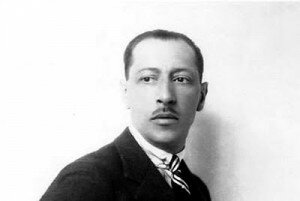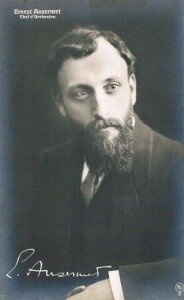
Picasso: Cover design for Ragtime
In 1918, on his way back from the US, where he’d been conductor for the Ballets Russes’ second American tour, Ernest Ansermet dropped off some music for Igor Stravinsky, a ‘bundle of ragtime music in the form of piano reductions and instrumental parts.’ Stravinsky copied out the parts into scores and used what he learned from them to create his own versions of ragtime.

Scott Joplin
Stravinsky’s first ragtime appeared as the third dance in Histoire du soldat (1918). The work is scored for a septet of violin, double bass, clarinet, bassoon, cornet, trombone, and percussion, and the premiere was conducted by Stravinsky’s friend, Ansermet.

Igor Stravinsky
His second ragtime piece was a work in its own right, entitled Ragtime. Written for 11 instruments (2 violins, viola, double bass, flute, clarinet, horn, cornet, trombone, cimbalom and percussion), its first performance was in a piano reduction played by Stravinsky. The cimbalom was a beloved instrument from Stravinsky’s childhood. Its distinct metallic sound places Stravinsky’s Ragtime very much in Europe, rather than being an American derivative. For Stravinsky, the sound of the instrument was akin to that of the balalaika and he created the ensemble around the instrument’s ‘whorehouse-piano sonority.’
Stravinsky: Ragtime (Columbia Jazz Ensemble; Igor Stravinsky, cond.)
A third piece of ragtime was Piano-Rag-Music, dated, 28 June 1919, and dedicated to Artur Rubinstein. The tongue-in-cheek dedication was, as Stravinsky said, to encourage him ‘to play contemporary music.’
Stravinsky: Piano-Rag-Music (Anatoly Sheleudyakov, piano)

Ernest Ansermet
Stravinsky himself declared that his pieces were not true ragtime, saying in 1963 that ‘the Histoire ragtime is a concert portrait or snapshot of the genre in the sense that Chopin’s Valses are not dance waltzes but portraits of waltzes.’ In his creations, Stravinsky drove ragtime as a genre forward and into places its inventors could only have dreamed of.



